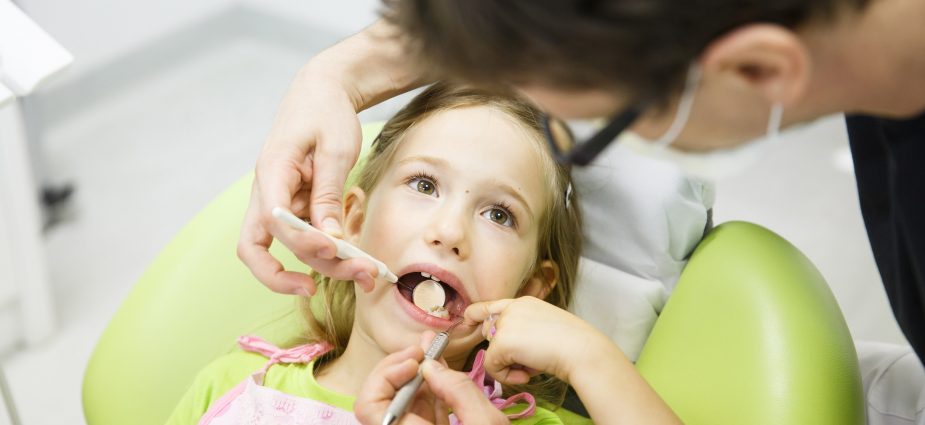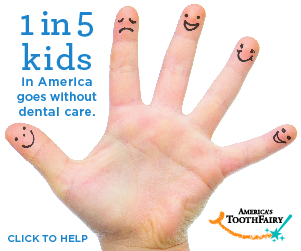Pediatric Tooth Decay: Protect Your Child’s Oral and General Health

The oral health of adult Americans has improved in recent years, but tooth decay among children – especially preschoolers – is on the rise. Dentists report they are now seeing cases with severe tooth breakdown in toddlers as young as two and a half years of age.
Although cavities are common in children, they are not the norm, but rather a malady leading to chronic pain, slow weight gain, further tooth decay, misalignment of the permanent teeth and infection that, if left unchecked, may result in abscess or even death.
Yet cavities, also known as caries, are viewed to be a behavioral disease and therefore completely preventable.
Pediatric Tooth Decay: The Culprits
The underlying culprits of pediatric tooth decay have recently been identified as streptococci mutans, a group of infectious bacteria that leach out protective calcium and phosphate from tooth enamel and dentin (the hard tissue located in between the outer enamel and the pulp and roots further inside).
These bacteria are “nurtured” by frequent servings of sugar- and carbohydrate-rich prepared foods and beverages, as well as improper brushing and flossing habits. But before the bacteria can do their damage, they must be transmitted to the baby’s mouth. This occurs via saliva transfer soon after the first tooth appears, around six months of age. Usually, the saliva is the mother’s or that of a caregiver. The transfer typically occurs via a shared spoon, when the mother cleans the baby’s pacifier in her mouth or when she kisses or nuzzles the baby’s head – after which the baby picks up the saliva on his or her hand and transfers it to the mouth. Such transfers start a colony of bacteria that can last a lifetime.
Keys to Preventing Pediatric Tooth Decay
Cavities affecting baby teeth and permanent teeth are treated with the same “drill and fill” measures familiar to adults. But the emphasis today is placed on preventive measures, which are considered key to the control of tooth decay. These preventive measures include:
- Checkups with a pediatric dentist starting at 12 months of age.
- Good nutrition ensures your child has a balanced diet of fruits and vegetables, breads and cereals, milk and dairy products, and meat, fish and eggs. Sugar-rich foods and beverages need not be completely avoided. But in order to cut off the build-up of decay-inducing bacteria, their frequency should be limited.
- Supervised tooth brushing until approximately age six, when children are likely to demonstrate that they can capably brush on their own. Parents are advised to clean babies’ and toddlers’ teeth with a brush or washcloth and a pea-sized dose of toothpaste, starting the day the first tooth erupts.
- Check the teeth monthly for horizontal white or brown spots or lines close to the gums. These markings are signs of demineralization, the first indications of tooth decay. When babies are nursing – breast or bottle fed – they tend to appear on the inside surface of the upper teeth. In children with permanent teeth, they are often found on biting surfaces or in between teeth. If you see these spots or lines, make an appointment with your dentist immediately. It may be possible to re-mineralize the area and prevent a cavity with fluoride treatment.
- Get adequate amounts of fluoride. While children receiving therapeutic fluoride treatments do not need additional sources of fluoride, all others should brush with a fluoridated toothpaste and drink fluoridated water. This usually means tap water. Parents should keep in mind that most bottled water is not fluoridated. (One exception: Spring! by Dannon Fluoridated Spring Water.)
- Ask your pediatric dentist about dental sealants. These plastic coatings placed on the chewing surfaces of the permanent molars (which appear between ages six to 12) protect the teeth by shutting out cavity-causing food particles. They are recommended for children at moderate to high risk for decay.
- Use Xylitol, a natural sweetener, derived from hardwood trees, that has been shown to weaken the effect of streptococci mutans. Clinical studies show that mothers and other caregivers who start chewing high-concentration Xylitol gum three months after birth will not only lessen the strep mutans content in their own saliva, but will transfer that healthy saliva balance to their baby.
- Suggested dose: Six grams per day, divided into three doses; make sure the gum has a minimum 50 percent concentration of Xylitol. Children old enough to chew gum or suck on Xylitol “candy drops” can also benefit. High-concentration Xylitol products are sold at health food stores and suppliers.
Next, go to:



